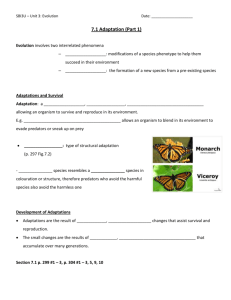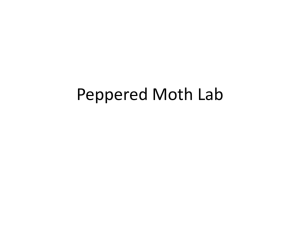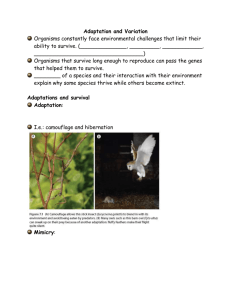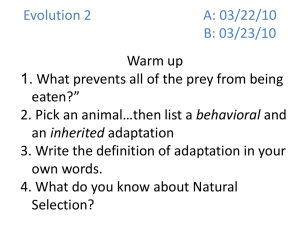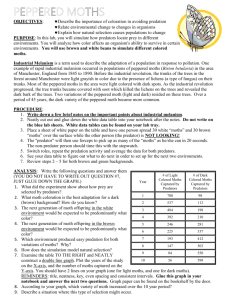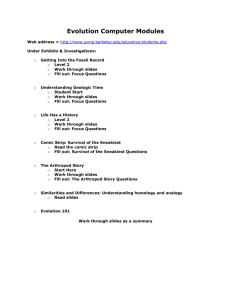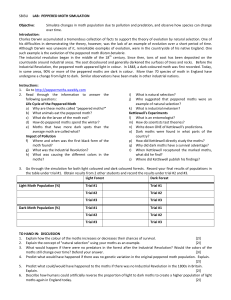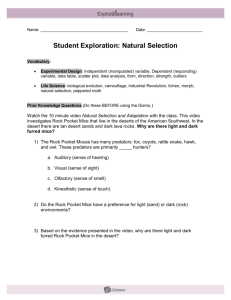Peppered Moth Simulation
advertisement
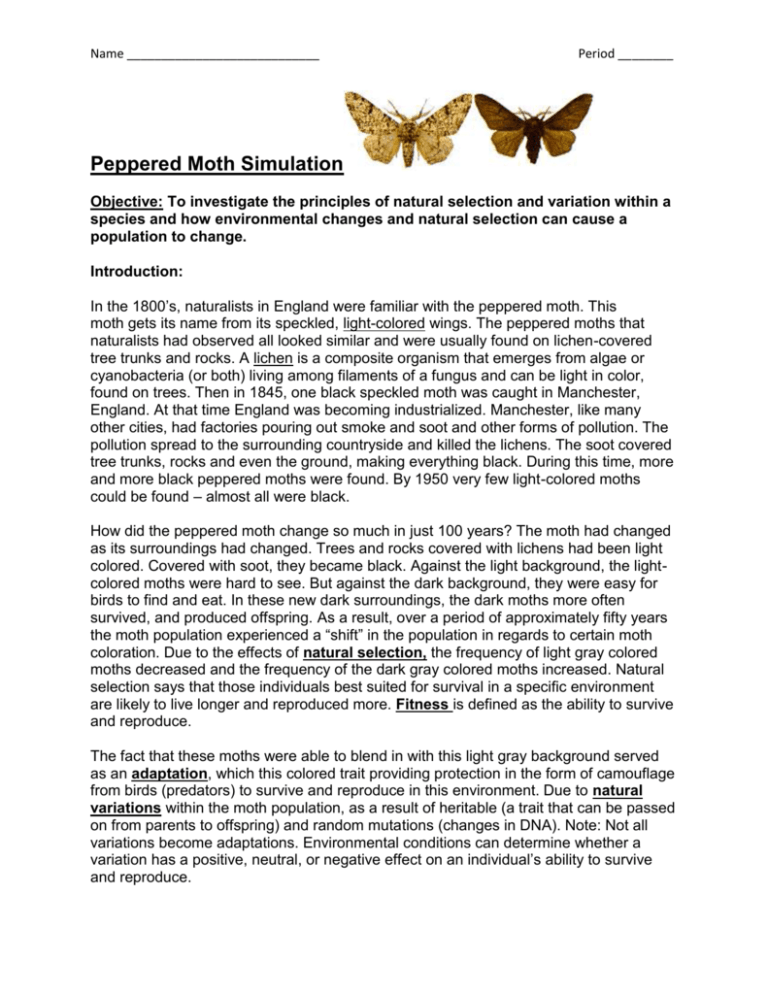
Name ____________________________ Period ________ Peppered Moth Simulation Objective: To investigate the principles of natural selection and variation within a species and how environmental changes and natural selection can cause a population to change. Introduction: In the 1800’s, naturalists in England were familiar with the peppered moth. This moth gets its name from its speckled, light-colored wings. The peppered moths that naturalists had observed all looked similar and were usually found on lichen-covered tree trunks and rocks. A lichen is a composite organism that emerges from algae or cyanobacteria (or both) living among filaments of a fungus and can be light in color, found on trees. Then in 1845, one black speckled moth was caught in Manchester, England. At that time England was becoming industrialized. Manchester, like many other cities, had factories pouring out smoke and soot and other forms of pollution. The pollution spread to the surrounding countryside and killed the lichens. The soot covered tree trunks, rocks and even the ground, making everything black. During this time, more and more black peppered moths were found. By 1950 very few light-colored moths could be found – almost all were black. How did the peppered moth change so much in just 100 years? The moth had changed as its surroundings had changed. Trees and rocks covered with lichens had been light colored. Covered with soot, they became black. Against the light background, the lightcolored moths were hard to see. But against the dark background, they were easy for birds to find and eat. In these new dark surroundings, the dark moths more often survived, and produced offspring. As a result, over a period of approximately fifty years the moth population experienced a “shift” in the population in regards to certain moth coloration. Due to the effects of natural selection, the frequency of light gray colored moths decreased and the frequency of the dark gray colored moths increased. Natural selection says that those individuals best suited for survival in a specific environment are likely to live longer and reproduced more. Fitness is defined as the ability to survive and reproduce. The fact that these moths were able to blend in with this light gray background served as an adaptation, which this colored trait providing protection in the form of camouflage from birds (predators) to survive and reproduce in this environment. Due to natural variations within the moth population, as a result of heritable (a trait that can be passed on from parents to offspring) and random mutations (changes in DNA). Note: Not all variations become adaptations. Environmental conditions can determine whether a variation has a positive, neutral, or negative effect on an individual’s ability to survive and reproduce. Name ____________________________ Period ________ Analysis Read the background information and answer the questions as you go. 1. Why are these moths called "peppered moths?" 2. What animals eat the peppered moth? 3. What is a lichen? Impact of Pollution 4. Where was the first black form of the moth found? 5. What was the Industrial Revolution? 6. What was causing the different colors in the moths? 7. What is natural selection? Instructions: Go to google and type in Peppered Moth Simulation. You want to select the eChalk Preview: Peppered moth natural simulation or you can type in www.echalk.co.uk/Science/biology/PepperedMoth/PepperedMoth.htm You will then click on “Use Resource” You will be the BIRD and by tapping the screen, you will EAT the moths. Start in the Pre-Industrial Forest first. Time for 5 minutes and record you percentages for Dark and Light. Then switch to the Post-Industrial Forest and record your results after 2 minutes. Data: Conclusion 8. What adaptation did certain moths have that increased their fitness (ability to survive)? 9. Explain the concept of "natural selection" using your moths as an example. Which did nature select FOR and which did it select AGAINST? 10. What determines variations in species and whether they are positive or negative?



